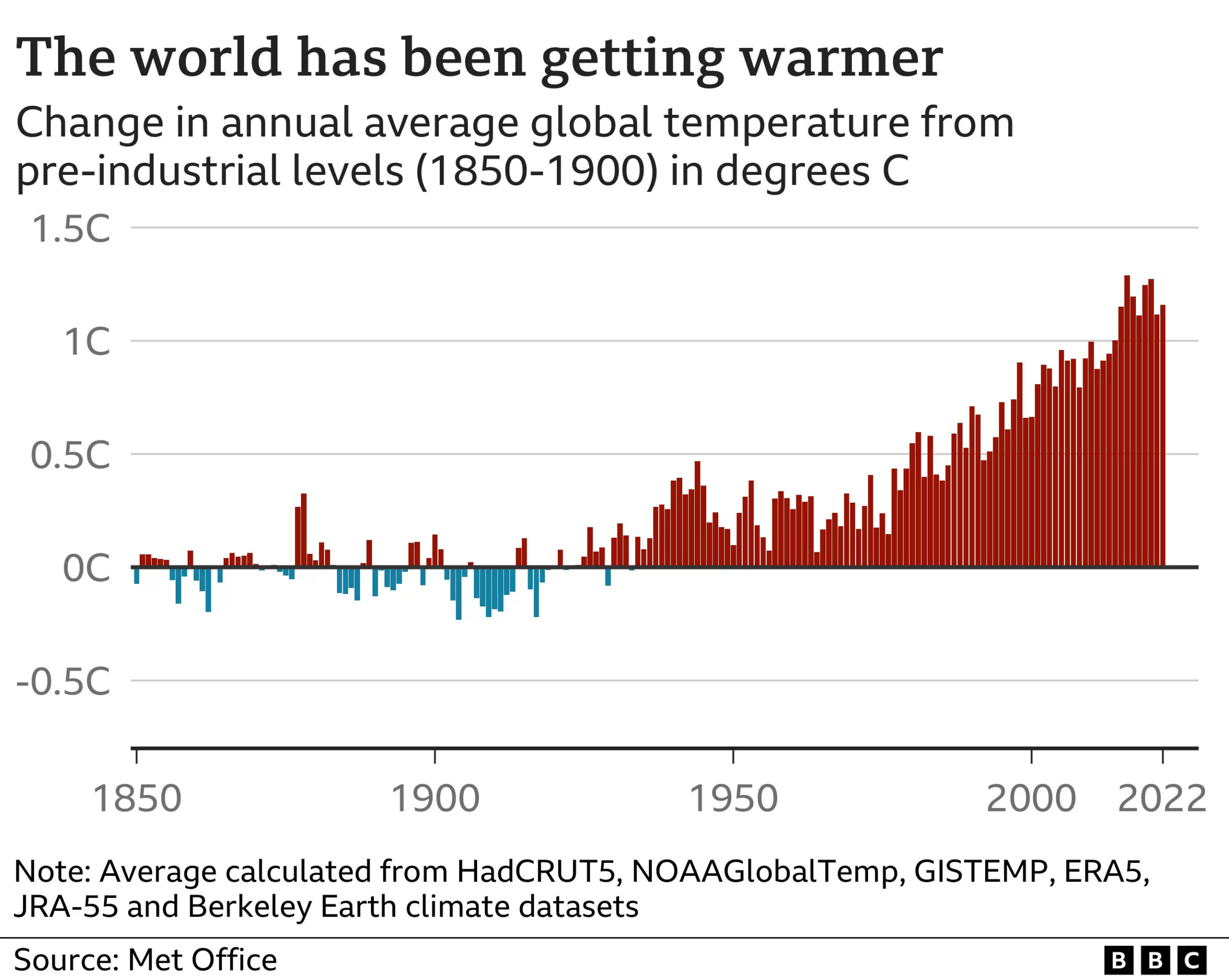ForumIAS announcing GS Foundation Program for UPSC CSE 2025-26 from 19 April. Click Here for more information.
ForumIAS Answer Writing Focus Group (AWFG) for Mains 2024 commencing from 24th June 2024. The Entrance Test for the program will be held on 28th April 2024 at 9 AM. To know more about the program visit: https://forumias.com/blog/awfg2024
Source: The post is based on the article “Key climate threshold likely to be breached in 5 years: UN” published in The Hindu on 18th May 2023
What is the News?
According to the World Meteorological Organization (WMO) report, global temperatures are likely to surge to record levels in the next five years, fuelled by heat-trapping greenhouse gases and a naturally occurring El Niño weather pattern.
What has WMO said in its report?
There is a 66% likelihood that the annual average near-surface global temperature between 2023 and 2027, will be more than 1.5°C above pre-industrial levels for at least one year.
These chances are rising due to emissions from human activities and a likely El Niño weather pattern later this year.
What does going over 1.5 °C mean?

The figure is not a direct measure of the world’s temperature but an indicator of how much or how little the Earth has warmed or cooled compared to the long-term global average.
Scientists use average temperature data from the period between 1850-1900 as a measure of how hot the world was before our modern reliance on coal, oil and gas.
For decades, they believed that if the world warmed by around 2 °C that would be the threshold of dangerous impacts – but in 2018 they significantly revised this estimate, showing that going past 1.5 °C would be calamitous for the world.
Over the past few decades the overheating world has nudged the mercury up so that in 2016, the warmest on record, global temperatures were 1.28 °C above the pre-industrial figure.
What difference will El-Nino make?
There are two key elements – the first is the continuing high levels of carbon emissions from human activities that despite a fall during the pandemic are still going up.
The second is the likely appearance of El Niño, a weather phenomenon with global implications.
For the last three years, the world has been experiencing a La Niña event which has dampened climate warming to some extent.
But the extra heat that El Niño will bring to the surface of the Pacific this year will likely push the global temperature to a new high next year.
Due to this, there is a 98% chance of at least one in the next five years beating the temperature record set in 2016, when there was an exceptionally strong El Niño.
Note: Typically, El Niño increases global temperatures in the year after it develops, in this case, that means 2024.




